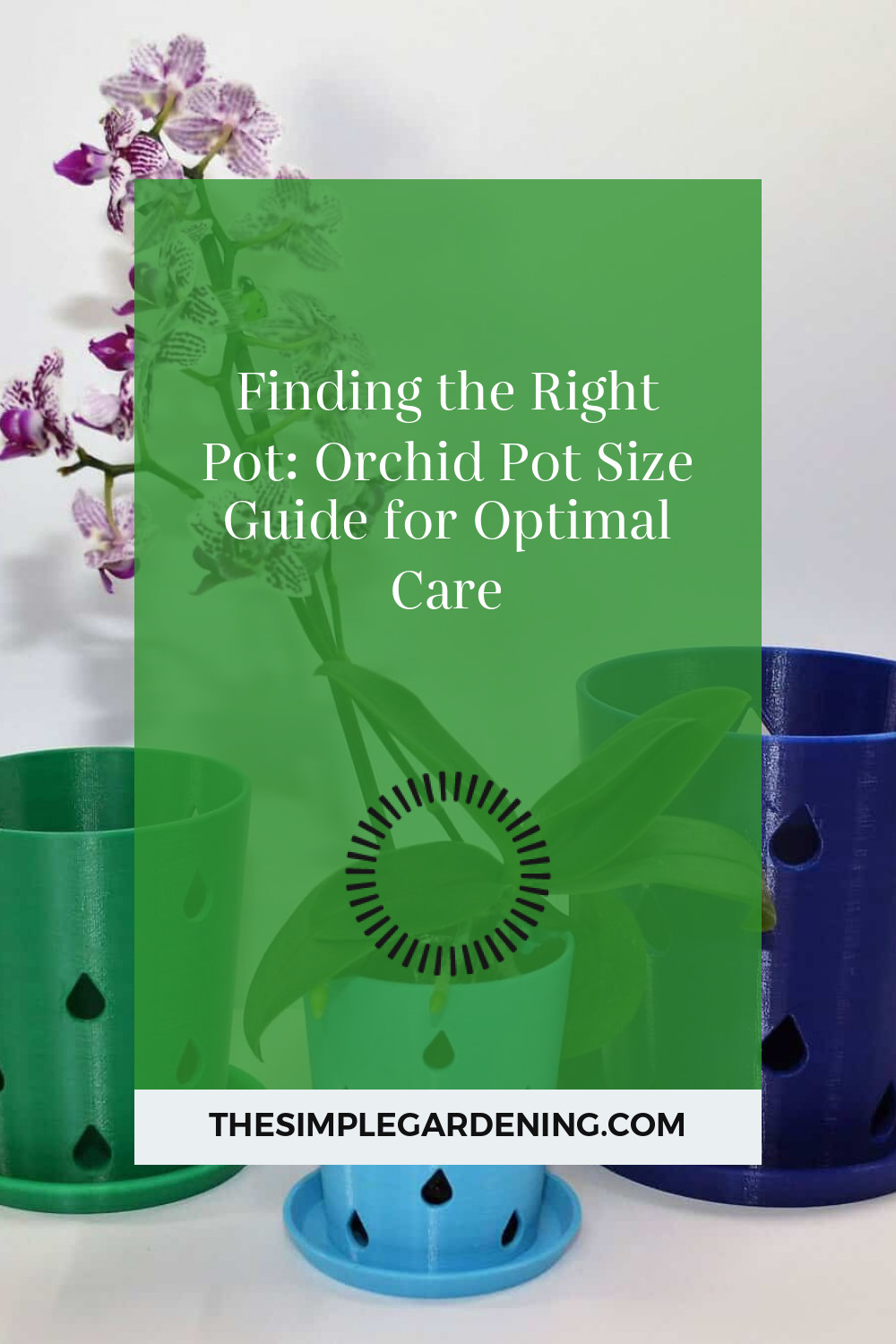Choosing the right pot size for your orchids is crucial. It’s not just about aesthetics; the pot size directly impacts the health and growth of your plants. Orchids have unique needs that can only be met with the proper pot size, ensuring they thrive and bloom beautifully.
Table: Importance of Correct Pot Size
| Importance | Description |
|---|---|
| Root Health | Proper pot size promotes healthy root systems. |
| Growth | Ensures orchids have enough space to grow. |
| Moisture Control | Helps maintain optimal moisture levels. |
| Stability | Prevents the plant from toppling over. |
| Disease Prevention | Reduces risk of root rot and other diseases. |
How Pot Size Impacts Orchid Health and Growth
Orchid health and growth are significantly influenced by pot size. Too small a pot can stifle growth, while too large a pot can lead to excessive moisture retention, causing root rot. The right size provides a balance that supports healthy growth and flowering.
Table: Impact of Pot Size on Health and Growth
| Pot Size | Impact on Health | Impact on Growth |
|---|---|---|
| Too Small | Restricts root expansion, poor nutrition | Stunted growth, fewer blooms |
| Just Right | Optimal root development, balanced moisture | Healthy growth, abundant blooms |
| Too Large | Excessive moisture, risk of root rot | Slower growth, delayed blooming |
Understanding Orchid Roots
Understanding Orchid Root Systems and Their Growth Patterns
Orchid roots are unlike those of other houseplants. They are adapted to absorb moisture and nutrients from the air, which is why potting them in appropriate containers is essential. Their roots grow both inside and outside the pot, seeking the best conditions for growth.
Table: Orchid Root Characteristics
| Characteristic | Description |
|---|---|
| Aerial Roots | Absorb moisture and nutrients from the air |
| Epiphytic Nature | Often grow on other plants or objects rather than soil |
| Root Thickness | Generally thicker than most plant roots |
| Velamen Layer | Spongy outer layer for moisture absorption |
| Sensitivity | Sensitive to overwatering and poor drainage |
The Relationship Between Pot Size and Root Development
The size of the pot plays a pivotal role in root development. Orchids in pots that are too small will have restricted root growth, leading to poor overall health. Conversely, overly large pots can hold too much moisture, causing roots to rot.
Table: Pot Size vs. Root Development
| Pot Size | Root Development Impact |
|---|---|
| Small | Restricted, compact roots; may cause stunted growth |
| Optimal | Balanced growth with healthy root spread |
| Large | Overgrowth risk, potential for root rot |
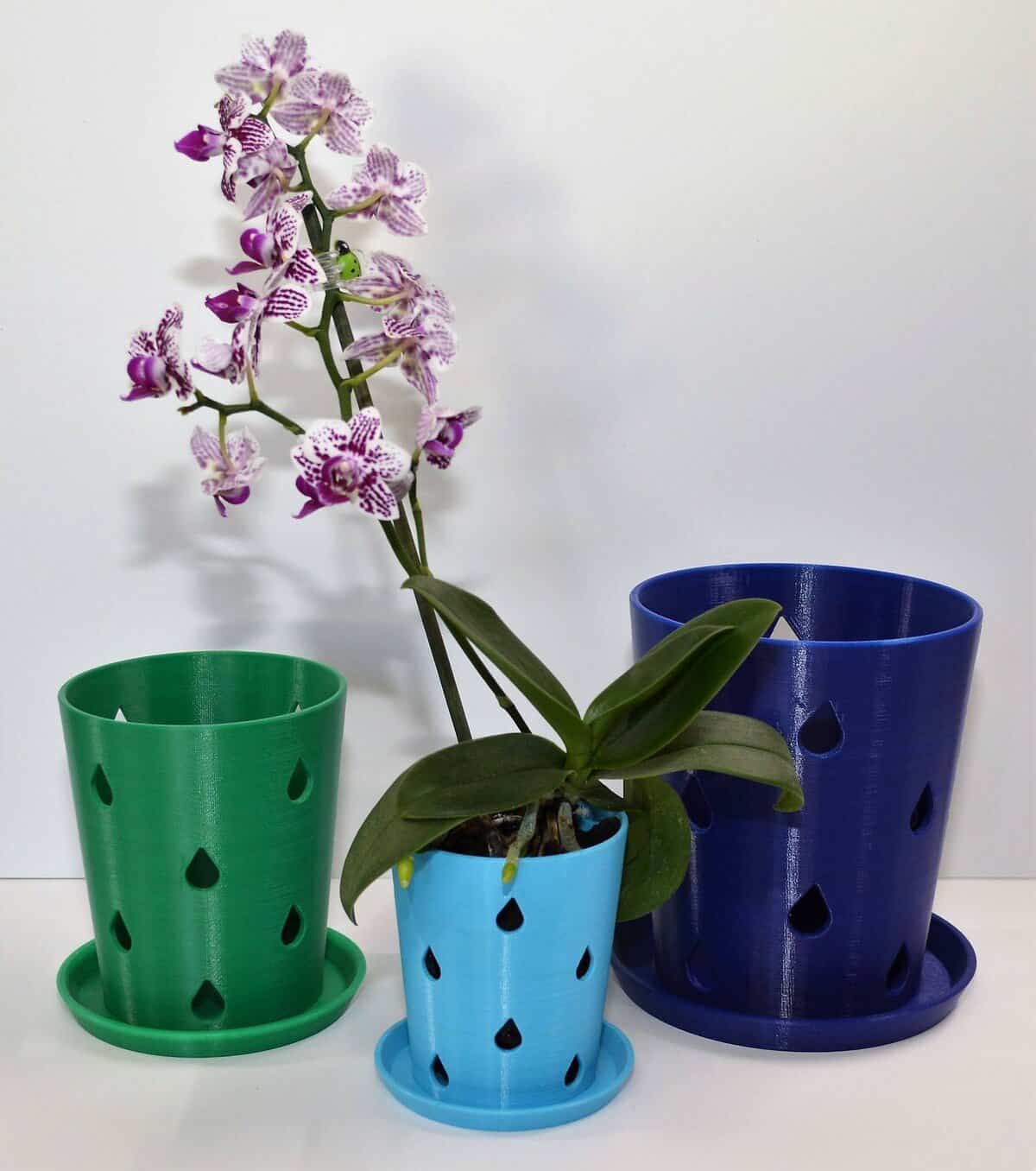
Source Image: paisleyplants.com
Choosing the Right Pot Size
Factors to Consider When Selecting Orchid Pot Size
When selecting a pot size for your orchid, several factors need to be considered, including the orchid species, its growth stage, and environmental conditions. Matching the pot size to these factors ensures the best possible growth conditions.
Table: Factors for Pot Selection
| Factor | Considerations |
|---|---|
| Orchid Species | Different species have varying pot size needs |
| Growth Stage | Young orchids need smaller pots; mature plants need larger pots |
| Root System Size | The current size of the root system |
| Environmental Conditions | Humidity and temperature of the growing environment |
| Watering Frequency | Larger pots require less frequent watering |
Matching Pot Size to Orchid Species and Growth Stage
Different orchid species and growth stages have specific pot size requirements. For instance, Phalaenopsis orchids, which have large roots, may need bigger pots as they mature, while miniature orchids will thrive in smaller pots throughout their life cycle.
Table: Recommended Pot Sizes by Species and Growth Stage
| Orchid Species | Young Plants | Mature Plants |
|---|---|---|
| Phalaenopsis | 3-4 inches | 5-6 inches |
| Cattleya | 4-5 inches | 6-7 inches |
| Dendrobium | 2-3 inches | 4-5 inches |
| Oncidium | 3-4 inches | 5-6 inches |
| Miniature Orchids | 1-2 inches | 2-3 inches |

Source Image: www.youtube.com
Small vs. Large Pots
Pros and Cons of Small Orchid Pots
Small pots offer several benefits but also come with drawbacks. They are ideal for young orchids or those with smaller root systems but can restrict growth if not monitored.
Table: Small Orchid Pots
| Pros | Cons |
|---|---|
| Easier to control moisture | Limited space for root expansion |
| Reduces risk of overwatering | May require frequent repotting |
| Ideal for small or young orchids | Can become unstable as plant grows |
| Promotes aeration | Roots may become pot-bound |
| Compact and space-saving | May need more frequent watering |
Pros and Cons of Large Orchid Pots
Large pots can accommodate mature orchids with extensive root systems but can also pose risks, particularly related to moisture retention.
Table: Large Orchid Pots
| Pros | Cons |
|---|---|
| Ample space for root expansion | Higher risk of overwatering |
| Suitable for mature, large-rooted orchids | Can be bulky and heavy |
| Less frequent repotting needed | Excess moisture can lead to root rot |
| Stable and supportive for tall plants | May dry out unevenly |
| Allows for mixed potting mediums | Difficult to manage humidity and temperature |
Standard Pot Sizes
Common Orchid Pot Sizes and Their Uses
Standard pot sizes range from small (2-3 inches) to large (6-7 inches), each suitable for different types of orchids and growth stages.
Table: Common Orchid Pot Sizes
| Pot Size | Use Case | Suitable For |
|---|---|---|
| 2-3 inch | Seedlings, mini orchids | Young plants, small species |
| 4 inch | Intermediate growth stage | Medium-sized orchids |
| 5 inch | Mature plants with established roots | Large orchids, Phalaenopsis |
| 6 inch | Advanced growth stage, flowering orchids | Mature, large-rooted species |
| 7 inch | Extra-large species, multiple plants | Mature, large, and epiphytic orchids |
Orchid Pot Size Standards in the Horticultural Industry
In the horticultural industry, orchid pots are standardized to facilitate uniform care practices. These standards ensure that growers and hobbyists can provide the best conditions for their plants.
Table: Industry Pot Size Standards
| Pot Size Standard | Description | Industry Use Case |
|---|---|---|
| Small (2-3 inch) | For young plants, initial growth stages | Nursery, propagation |
| Medium (4-5 inch) | For intermediate growth, transitioning stages | Retail, home gardening |
| Large (6-7 inch) | For mature plants, flowering and established orchids | Display, mature plant care |
| Extra Large (8+ inch) | For very large species, advanced growth | Special collections, epiphytic species |
| Custom Sizes | Tailored pots for specific orchid needs | Specialized horticulture |

Source Image: brilliantorchids.com
Repotting Considerations
When to Repot Orchids Based on Pot Size
Repotting is essential for maintaining healthy orchids. The timing depends on the pot size and the growth stage of the plant. Regular repotting ensures the roots have enough space and fresh potting medium.
Table: Repotting Indicators
| Indicator | Description | Timing |
|---|---|---|
| Root Overgrowth | Roots circling inside or outside the pot | Every 1-2 years |
| Pot Stability | Plant toppling over | When plant becomes unstable |
| Degraded Potting Medium | Breakdown of the medium, poor drainage | Every 1-2 years |
| New Growth | New growths pushing against the pot sides | When new growth is evident |
| Reduced Flowering | Decrease in bloom frequency or quality | When flowering diminishes |
How to Transition Orchids to Larger or Smaller Pots
Transitioning orchids to a new pot size requires careful handling to avoid damaging the roots. Whether moving to a larger or smaller pot, the process must ensure the plant adapts well to its new environment.
Table: Steps for Repotting
| Step | Description |
|---|---|
| Remove Orchid | Gently remove the orchid from its current pot |
| Inspect Roots | Check and trim damaged or rotting roots |
| Choose Pot | Select the appropriate new pot size |
| Add Medium | Place fresh potting medium in the new pot |
| Position Plant | Position the orchid centrally, ensuring roots are well-spread |
| Fill and Settle | Fill with potting medium around the roots, gently settling the plant |
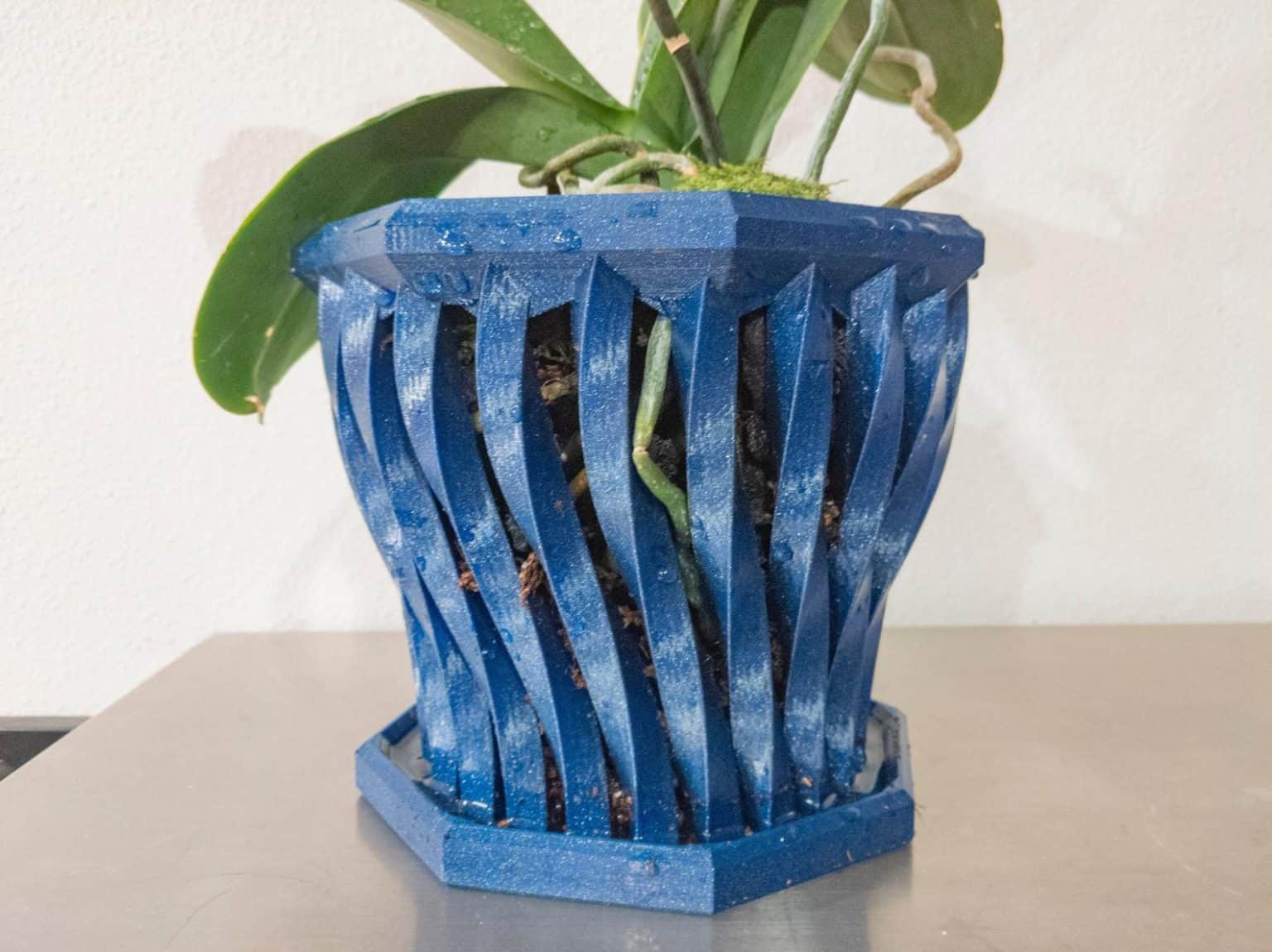
Source Image: paisleyplants.com
Orchid Pot Size
Potting Medium and Drainage
Balancing Pot Size with Potting Medium and Drainage Needs
The potting medium and drainage must be balanced with the pot size to ensure healthy root growth. Different pot sizes may require adjustments in the type and amount of medium used.
Table: Potting Medium and Drainage
| Pot Size | Suitable Medium | Drainage Considerations |
|---|---|---|
| Small | Fine bark, sphagnum moss | High drainage, frequent checks |
| Medium | Medium bark, perlite mix | Moderate drainage, balanced moisture |
| Large | Coarse bark, lava rock | Excellent drainage, careful watering |
| Extra Large | Mix of coarse materials | Ensure even moisture distribution |
| Custom Sizes | Tailored mix for specific needs | Adjust based on plant and pot requirements |
Choosing the Right Potting Mix for Different Pot Sizes
Selecting the right potting mix for your orchid’s pot size is essential for providing adequate support and nutrition. Different mixes work best for different pot sizes.
Table: Recommended Potting Mixes
| Pot Size | Recommended Mix | Benefits |
|---|---|---|
| Small | Fine bark, sphagnum moss, perlite | Good moisture retention, aeration |
| Medium | Medium bark, charcoal, perlite | Balanced drainage and moisture |
| Large | Coarse bark, lava rock, charcoal | Excellent drainage, prevents root rot |
| Extra Large | Large bark, rock wool, charcoal | Ensures stability and drainage |
| Custom | Tailored to plant needs, often a mix of above | Specific to orchid species and growing conditions |
Pot Material Options
Different Types of Orchid Pots: Plastic, Clay, and Ceramic
The material of the pot also affects orchid growth. Each type of pot material has its advantages and disadvantages, impacting the plant’s overall health.
Table: Types of Orchid Pots
| Material | Advantages | Disadvantages |
|---|---|---|
| Plastic | Lightweight, retains moisture, affordable | Can overheat, less breathable |
| Clay | Breathable, heavy, good for stability | Can dry out quickly, breakable |
| Ceramic | Decorative, stable, retains moisture | Heavy, can retain too much moisture |
How Pot Material Affects Orchid Growth and Care
The choice of pot material impacts water retention, temperature regulation, and the overall health of the orchid. Understanding these effects helps in selecting the best pot for your plant.
Table: Material Effects on Growth
| Material | Water Retention | Temperature Regulation | Overall Health Impact |
|---|---|---|---|
| Plastic | High, risk of overwatering | Can overheat in direct sunlight | Good for moisture-loving orchids |
| Clay | Moderate, good drainage | Keeps roots cool, ideal for warm climates | Ideal for drought-tolerant orchids |
| Ceramic | Moderate to high, depending on glaze | Stable, but can retain too much moisture | Good for temperate climates, aesthetic |
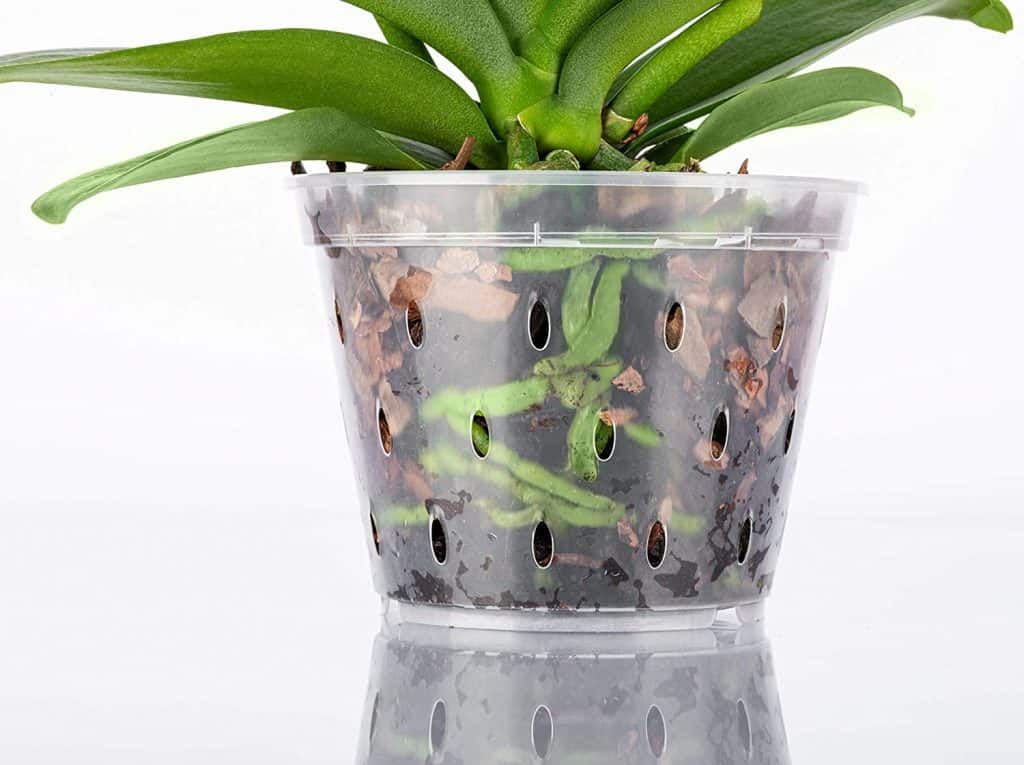
Source Image: paisleyplants.com
Potting Techniques
Proper Potting Techniques for Different Pot Sizes
Proper potting techniques are essential for ensuring your orchid thrives. Different pot sizes require different approaches to potting.
Table: Potting Techniques by Pot Size
| Pot Size | Technique | Key Considerations |
|---|---|---|
| Small | Use fine mix, ensure tight fit | Frequent watering, good aeration |
| Medium | Use medium mix, center plant | Balance moisture and drainage |
| Large | Use coarse mix, firm placement | Prevent root rot, ensure stability |
| Extra Large | Mix of coarse and fine, secure plant | Ensure even moisture, firm positioning |
| Custom | Tailored technique based on plant and pot characteristics | Specific to orchid species and pot size |
Tips for Ensuring Proper Drainage and Air Circulation in Orchid Pots
Ensuring proper drainage and air circulation is crucial for orchid health. Here are some tips to achieve this balance.
Table: Drainage and Air Circulation Tips
| Tip | Description |
|---|---|
| Use Drainage Holes | Ensure pots have adequate drainage holes |
| Elevate Pot | Use pot feet or stands to elevate the pot for better air circulation |
| Use Potting Medium | Choose a medium that promotes air flow and drainage |
| Monitor Watering | Avoid overwatering to prevent waterlogging |
| Repot Regularly | Repot to refresh potting medium and improve drainage |
Temperature and Humidity Considerations
How Pot Size Affects Temperature and Humidity Levels Around Orchid Roots
Pot size can influence the microenvironment around orchid roots, affecting temperature and humidity levels. Larger pots can retain more moisture and heat, while smaller pots dry out more quickly.
Table: Temperature and Humidity by Pot Size
| Pot Size | Temperature Impact | Humidity Impact |
|---|---|---|
| Small | Heats up and cools down quickly | Dries out quickly, frequent watering needed |
| Medium | Moderate temperature fluctuations | Balanced humidity retention |
| Large | Stable temperature, retains heat | High humidity retention, careful monitoring |
| Extra Large | Stable temperature, may overheat | High humidity, risk of waterlogging |
Maintaining Optimal Growing Conditions Based on Pot Size
Maintaining optimal growing conditions involves adjusting care practices based on pot size. This includes monitoring watering, temperature, and humidity levels.
Table: Optimal Growing Conditions
| Pot Size | Watering Frequency | Temperature Range | Humidity Range |
|---|---|---|---|
| Small | Frequent, light watering | 65-75°F (18-24°C) | 40-60% |
| Medium | Moderate watering | 60-80°F (16-27°C) | 50-70% |
| Large | Less frequent, deep watering | 60-85°F (16-29°C) | 60-80% |
| Extra Large | Infrequent, thorough watering | 55-90°F (13-32°C) | 70-90% |
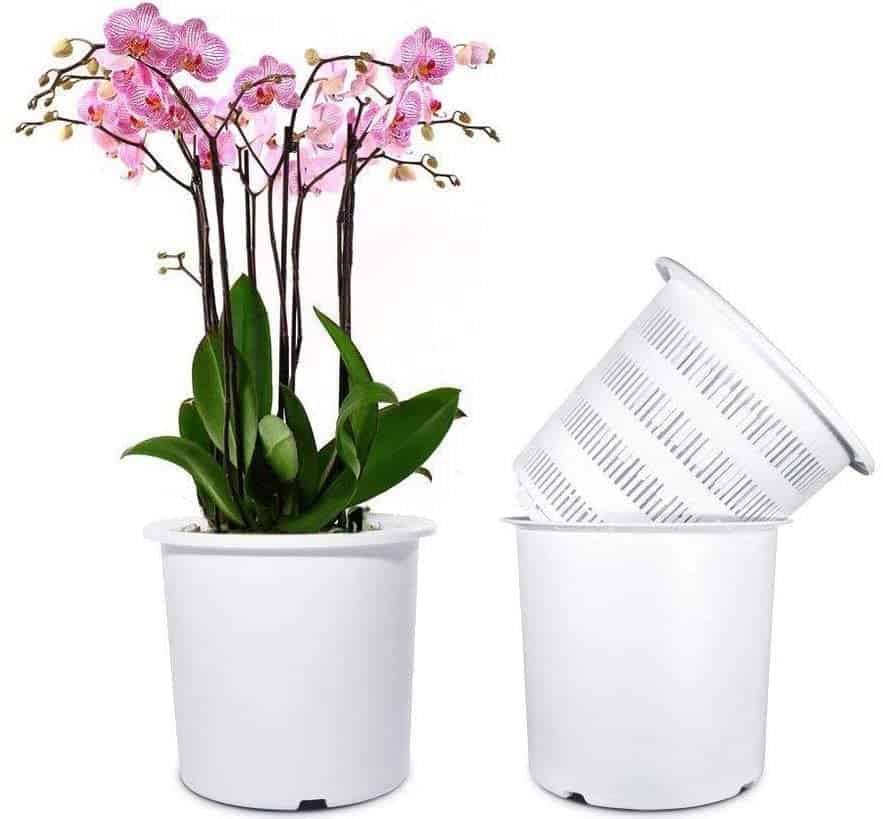
Source Image: paisleyplants.com
Overpotting vs. Underpotting
Understanding the Risks of Overpotting Orchids
Overpotting, or placing orchids in pots that are too large, can lead to excessive moisture retention and root rot. It’s essential to match pot size with plant needs to avoid these risks.
Table: Risks of Overpotting
| Risk | Description |
|---|---|
| Root Rot | Excessive moisture retention leads to root decay |
| Poor Growth | Roots struggle to find footing, slowing overall growth |
| Overwatering | Larger pots hold more water, increasing risk of overwatering |
| Nutrient Deficiency | Diluted nutrients in larger volumes of medium |
| Fungal Infections | Higher risk of fungal growth due to constant moisture |
Recognizing the Signs of Underpotting and Its Effects on Orchid Health
Underpotting, or using too small a pot, can restrict root growth and reduce the plant’s stability. Recognizing the signs helps in timely repotting.
Table: Signs and Effects of Underpotting
| Sign | Effect on Health |
|---|---|
| Roots Circling Pot | Stunted growth, nutrient deficiency |
| Toppling Plant | Unstable, risk of damage |
| Rapid Drying Out | Requires frequent watering, risk of dehydration |
| Limited New Growth | Reduced flowering and leaf growth |
| Yellowing Leaves | Nutrient deficiencies due to restricted root space |
Pot Size and Flowering
How Pot Size Influences Orchid Flowering
Pot size can directly impact flowering. An appropriately sized pot supports the plant’s energy needs, promoting healthy blooms.
Table: Pot Size and Flowering Impact
| Pot Size | Flowering Impact |
|---|---|
| Small | Limited blooms, potential for stress |
| Medium | Optimal blooms, balanced growth |
| Large | Delayed blooms, risk of overwatering |
| Extra Large | Rarely blooms, focus on root growth |
Encouraging Bloom by Choosing the Right Pot Size
Choosing the right pot size can encourage blooming by providing the necessary support and conditions for flower development.
Table: Encouraging Bloom Tips
| Tip | Description |
|---|---|
| Right Pot Size | Match pot size to orchid’s growth stage |
| Balanced Watering | Ensure proper moisture levels for blooming |
| Adequate Light | Provide sufficient light for photosynthesis |
| Fertilization | Use bloom-promoting fertilizers |
| Repotting Timing | Repot at the right time to avoid disturbing flowering cycles |

Source Image: myimageschase.blogspot.com
Orchid Pot Size
Pot Size for Different Orchid Types
Recommended Pot Sizes for Phalaenopsis, Cattleya, Dendrobium, and Other Orchid Types
Different orchid types have specific pot size requirements. Here are the recommended sizes for some common varieties.
Table: Recommended Pot Sizes by Orchid Type
| Orchid Type | Recommended Pot Size |
|---|---|
| Phalaenopsis | 5-6 inches |
| Cattleya | 6-7 inches |
| Dendrobium | 4-5 inches |
| Oncidium | 5-6 inches |
| Miniature Orchids | 2-3 inches |
Tailoring Pot Size to Orchid Species and Growth Habits
Tailoring pot size to the specific species and growth habits of your orchid ensures optimal care and growth.
Table: Tailoring Pot Size
| Species | Growth Habit | Ideal Pot Size |
|---|---|---|
| Phalaenopsis | Large roots, monopodial | 5-6 inches |
| Cattleya | Rhizomatous, sympodial | 6-7 inches |
| Dendrobium | Canes, sympodial | 4-5 inches |
| Oncidium | Pseudobulbs, sympodial | 5-6 inches |
| Miniature Orchids | Compact, varied | 2-3 inches |
Monitoring Orchid Growth
Monitoring Orchid Growth and Health Based on Pot Size
Regular monitoring of your orchid’s growth and health is essential. Pot size plays a crucial role in this, influencing various growth parameters.
Table: Monitoring Parameters
| Parameter | Description |
|---|---|
| Root Health | Check for healthy, firm roots |
| Leaf Growth | Monitor for new, healthy leaves |
| Flower Development | Track budding and blooming cycles |
| Moisture Levels | Ensure appropriate moisture in potting mix |
| Stability | Ensure plant stability and support |
Adjusting Pot Size as Orchids Grow and Develop
As orchids grow, their pot size needs may change. Adjusting pot size accordingly helps maintain optimal conditions for growth.
Table: Adjusting Pot Size
| Growth Stage | Action Required |
|---|---|
| Seedling | Start with small pot (2-3 inches) |
| Intermediate Growth | Transition to medium pot (4-5 inches) |
| Mature Plant | Move to large pot (5-7 inches) |
| Blooming Phase | Ensure pot size supports flower spikes |
| Root Bound | Repot to larger size, refresh medium |
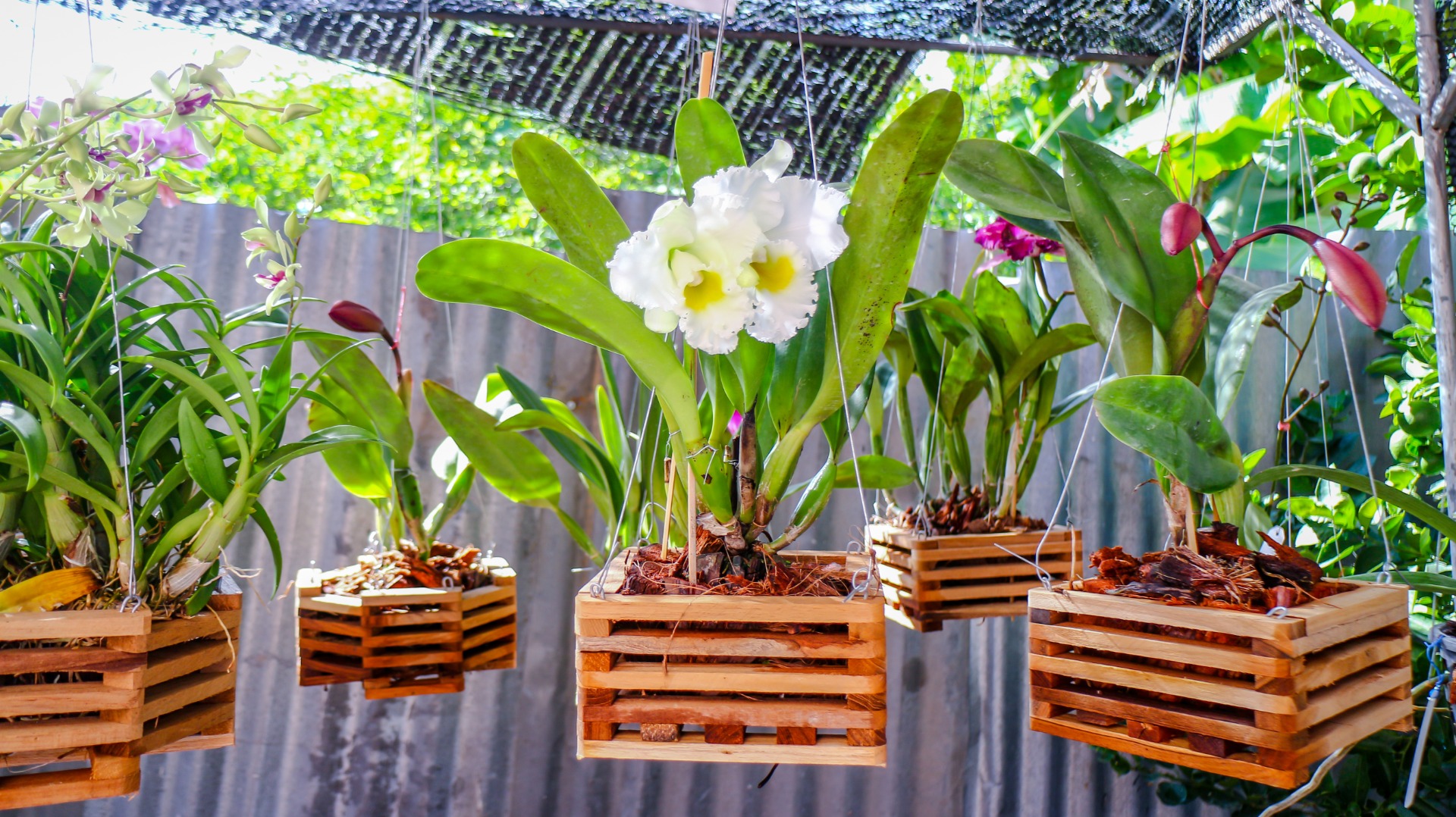
Source Image: brilliantorchids.com
Potting orchids is an art that involves finding the perfect balance between pot size, potting medium, and care practices. By understanding and applying the right techniques, you can ensure your orchids thrive and bloom beautifully.
Empowering Orchid Enthusiasts to Make Informed Pot Size Decisions for Successful Orchid Care
With the right knowledge and tools, you can make informed decisions about pot size and care practices, leading to successful and rewarding orchid cultivation. Happy growing!

